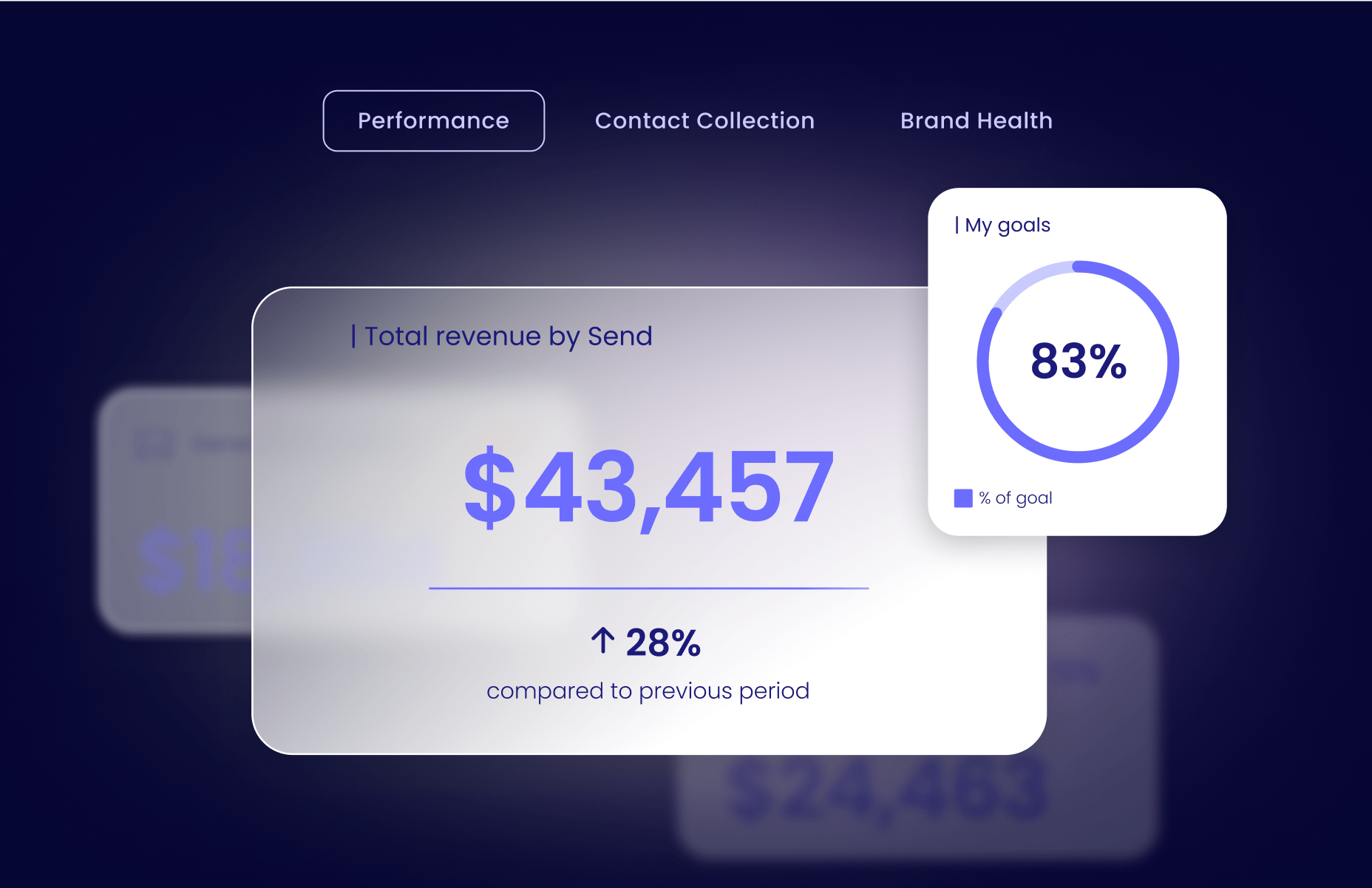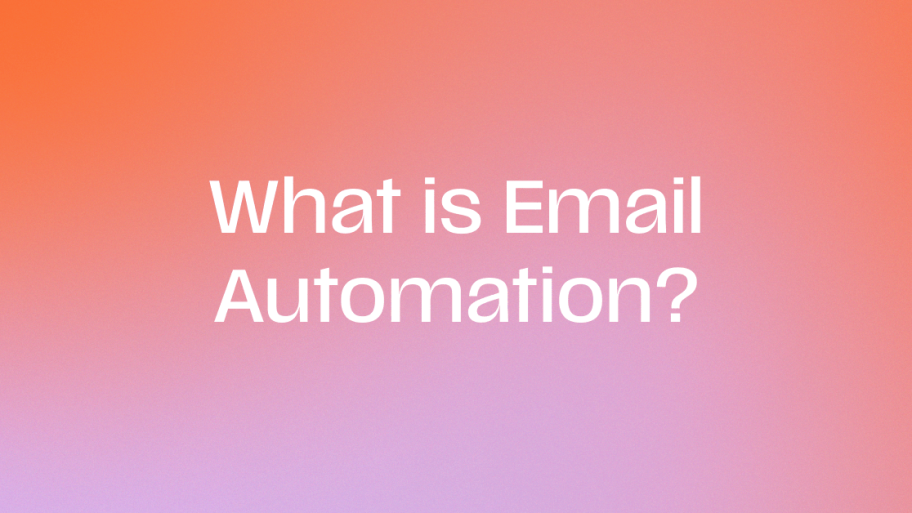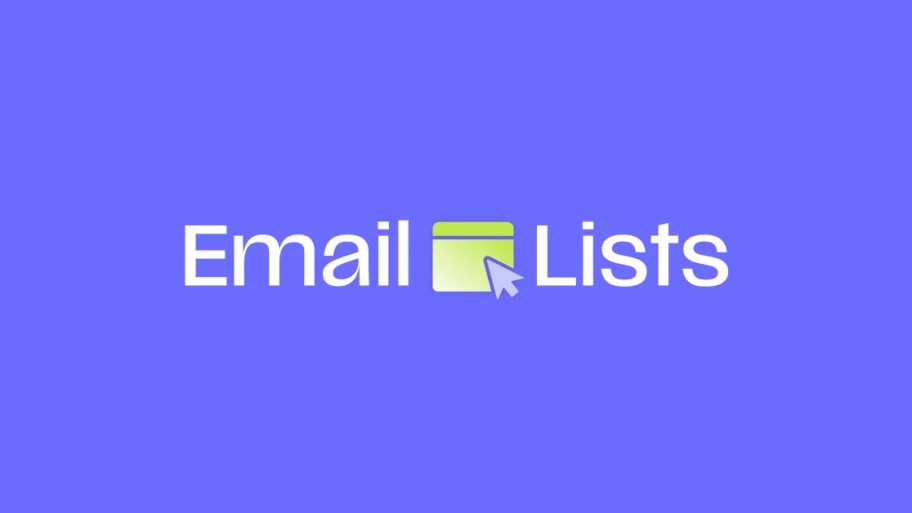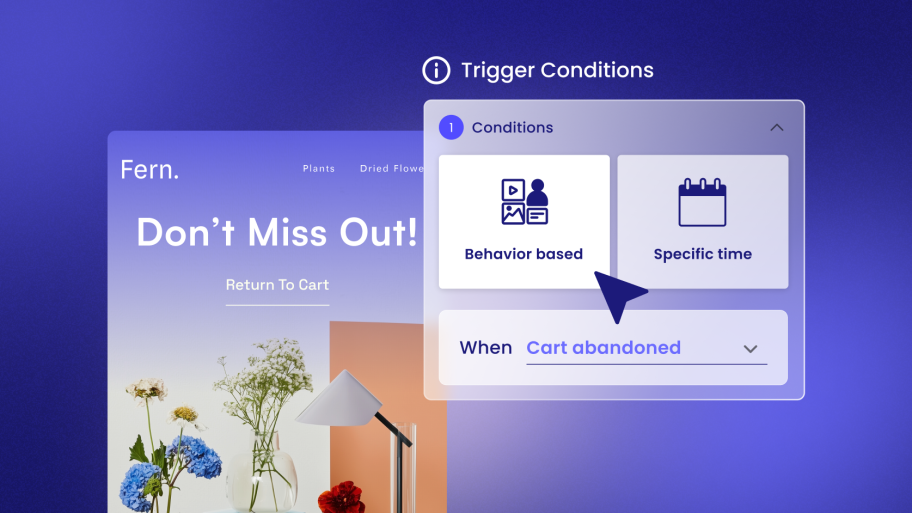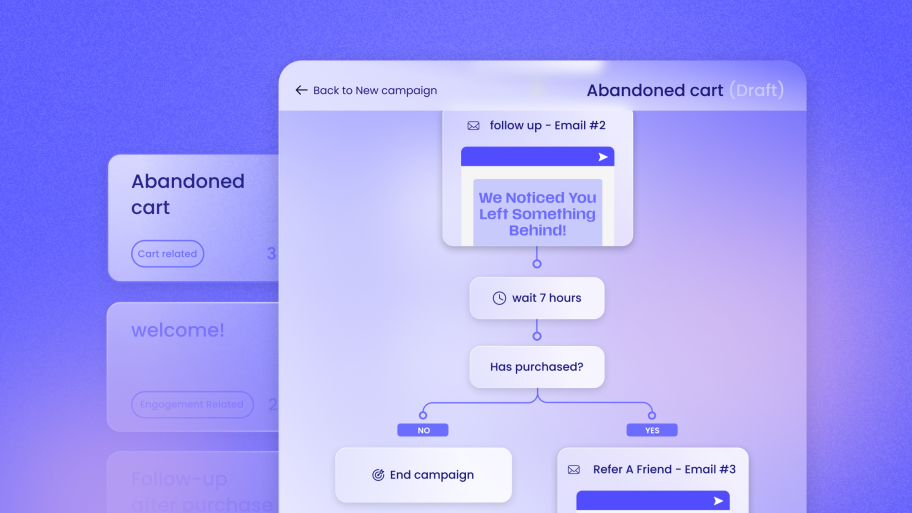This guide will walk you through everything you need to know, from the fundamental concepts to practical, real-world examples. We’ll explore the tools that make it possible and show you how to set up automated workflows that grow your business, even while you sleep. Let’s get started.
What Exactly Is Email Automation?
Email automation is the process of using software to send emails to your subscribers based on predefined triggers or a set schedule. Instead of manually crafting and sending every single message, you create automated workflows that do the work for you. These workflows are smart; they can be triggered by a user’s specific action, a significant date, or a change in their data.
Think of it as having a highly efficient assistant who knows exactly when to reach out to a customer and what to say.
- A new subscriber signs up? They automatically receive a welcome email.
- A customer adds a product to their cart but doesn’t complete the purchase? An abandoned cart reminder is sent a few hours later.
- A customer’s birthday is coming up? They get a special discount offer.
This isn’t just about scheduling email blasts. True automation is about delivering the right message to the right person at the right time. It’s a strategic approach that relies on data and behavior to create a more personal and effective communication channel. By automating these touchpoints, you free up valuable time to focus on other areas of your business while ensuring your audience remains engaged.
Why Email Automation is Crucial for Your Business in 2025
If you think email is an outdated marketing channel, it’s time to reconsider. In 2025, email remains one of the most powerful and cost-effective tools at your disposal. When you add automation to the mix, its value skyrockets. Here’s why it’s no longer a “nice-to-have” but a fundamental component of a successful business strategy.
Boost Efficiency and Save Time
This is the most immediate and obvious benefit. Manually sending individual emails for every customer interaction is simply not scalable. Imagine trying to personally welcome every new subscriber or remind every shopper about their abandoned cart. It would be a full-time job.
Automation handles these repetitive tasks for you. You design the workflow once, and it runs continuously in the background. This frees you to concentrate on strategy, content creation, and other high-impact activities that require a human touch.
Drive Revenue and Increase Sales
Automated emails are a direct line to your customers’ inboxes, and they generate real results. In fact, businesses that use automation see significantly higher conversion rates.
- Abandoned Cart Emails: These are incredibly effective. Sending a series of three abandoned cart emails can result in 69% more orders than a single email.
- Welcome Series: A warm welcome can do more than just introduce your brand. Welcome emails have an average open rate of over 80% and can generate 320% more revenue per email than other promotional messages.
- Upselling and Cross-selling: Automation allows you to send targeted product recommendations based on a customer’s purchase history. This personalized approach makes your offers more relevant and compelling, leading to increased customer lifetime value.
Create a Personalized Customer Journey
Today’s consumers expect personalization. Generic, one-size-fits-all marketing messages no longer cut it. Email automation allows you to segment your audience and tailor your communication based on their specific interests, behaviors, and demographics.
You can create unique paths for different types of customers:
- New subscribers
- First-time buyers
- Loyal, repeat customers
- Inactive subscribers you want to re-engage
By sending content that resonates with each segment, you build a stronger, more meaningful relationship with your audience. This leads to increased loyalty and a higher likelihood of them becoming brand advocates.
Improve Customer Retention
Acquiring a new customer can be five times more expensive than retaining an existing one. Email automation is a powerful tool for nurturing the relationships you already have.
You can set up automated workflows to:
- Check in after a purchase to ensure satisfaction.
- Provide useful tips on how to get the most out of their product.
- Celebrate milestones like birthdays or anniversaries of their first purchase.
- Re-engage customers who haven’t made a purchase in a while with a special offer.
These small, consistent touchpoints show your customers that you value them beyond the initial sale, encouraging them to stick around for the long haul.
Getting Started: Your 5-Step Plan for Email Automation
Feeling ready to dive in? Setting up email automation might seem complex, but it’s a process you can manage by breaking it down into logical steps. Here’s a straightforward plan to get you from zero to your first automated workflow.
Step 1: Choose the Right Automation Platform
Your email automation tool is the engine that will power your strategy. The market is full of options, so it’s important to choose one that fits your specific needs. When evaluating platforms, consider these key factors:
- Ease of Use: Is the interface intuitive? Can you build workflows with a visual drag-and-drop editor, or does it require technical expertise?
- Integration Capabilities: How well does it connect with your other business tools? For anyone running a website on WordPress, especially a WooCommerce store, a native integration is a game-changer. A tool like Send by Elementor is built specifically for this environment, ensuring seamless communication between your website and your email marketing without complex setups or third-party connectors.
- Features: Does it offer the core functionalities you need? Look for robust segmentation, A/B testing, detailed analytics, and a variety of workflow triggers.
- Scalability: Will the platform grow with your business? Consider its pricing tiers and the features available at each level.
Step 2: Build and Grow Your Email List
You can’t automate emails without a list of subscribers. And not just any list—you need a list of people who have explicitly given you permission to contact them. This is crucial for both legal compliance (think GDPR and CAN-SPAM) and for ensuring your emails are actually wanted.
Here are some effective ways to build your list:
- Opt-in Forms: Place clear and compelling sign-up forms on your website. Common locations include the footer, sidebar, and as a pop-up or slide-in.
- Lead Magnets: Offer something of value in exchange for an email address. This could be a free guide, a checklist, a webinar, a discount code, or a template.
- Content Upgrades: Within your blog posts, offer a bonus piece of content (like a PDF version or a resource list) that readers can unlock by subscribing.
- Checkout Opt-in: For e-commerce stores, provide a simple checkbox during the checkout process that allows customers to join your mailing list.
Step 3: Understand and Segment Your Audience
Sending the same message to everyone on your list is a recipe for low engagement. Segmentation is the practice of dividing your email list into smaller, more targeted groups based on shared characteristics. This allows you to send highly relevant content that speaks directly to the recipient’s interests.
You can segment your audience based on:
- Demographics: Age, gender, location.
- Sign-up Source: Where did they subscribe from? (e.g., a specific lead magnet).
- Purchase History: What have they bought? How much have they spent?
- Website Behavior: Which pages have they visited? Have they abandoned a cart?
- Email Engagement: Do they open every email, or have they been inactive for months?
The more you segment, the more personal your automations can be.
Step 4: Map Out Your First Automation Workflows
Start simple. You don’t need to build a dozen complex workflows on day one. Identify a few key customer touchpoints that would benefit most from automation.
Here are three excellent workflows to begin with:
- The Welcome Series: What happens right after someone subscribes? A good welcome series introduces your brand, sets expectations, and delivers any promised lead magnet.
- The Abandoned Cart Reminder: For e-commerce, this is a must-have. It recovers potentially lost sales by gently nudging customers to complete their purchase.
- The Post-Purchase Follow-up: After a customer buys something, your job isn’t done. A follow-up email can thank them, ask for a review, or provide helpful tips for using their new product.
For each workflow, sketch out the steps. What is the trigger? How many emails will be in the sequence? What is the time delay between each email? What is the goal of the workflow?
Step 5: Create Your Content and Set It Live
Now it’s time to write your emails. Keep your brand voice consistent and focus on providing value. Each email in a workflow should have a clear purpose.
Best Practices for Writing Automated Emails:
- Write a Compelling Subject Line: Make it clear, concise, and intriguing.
- Personalize the Content: Use the subscriber’s name and reference their recent activity.
- Have a Single, Clear Call-to-Action (CTA): What do you want the reader to do? Click a link? Make a purchase? Leave a review? Make it obvious.
- Keep it Mobile-Friendly: A majority of emails are opened on mobile devices. Ensure your design is responsive and easy to read on a small screen.
Once your emails are written, build the workflow in your chosen platform, set your triggers and time delays, and activate it. Congratulations, you’ve just launched your first email automation!
Real-World Email Automation Examples You Can Use Today
Theory is great, but practical examples are better. Let’s break down some of the most effective automation workflows that businesses are using successfully in 2025.
1. The Welcome Email Series
This is your first impression, so make it count. A welcome series nurtures new subscribers and guides them toward becoming customers.
- Trigger: A user subscribes to your email list.
- Goal: Introduce your brand, build trust, and encourage the first purchase.
Example Workflow:
- Email 1 (Sent Immediately):
- Subject: Welcome to the [Your Brand] Family! Here’s your [Lead Magnet].
- Content: A warm welcome message. Deliver the promised lead magnet (e.g., discount code, e-book). Briefly introduce your brand’s mission and what they can expect from your emails.
- Email 2 (Sent 2 Days Later):
- Subject: So, what are you interested in?
- Content: Ask subscribers to self-segment by clicking on links related to their interests (e.g., “I’m interested in Men’s Shoes,” “I’m interested in Women’s Apparel”). This helps you gather data for future personalization. You could also share links to your most popular content or product categories.
- Email 3 (Sent 4 Days Later):
- Subject: A little something from our founder.
- Content: A personal story from the founder can help build a human connection. Share the “why” behind your brand. End with a soft call-to-action, perhaps showcasing a best-selling product.
2. The Abandoned Cart Workflow
This is a must for any e-commerce business. Customers abandon carts for many reasons; a timely reminder can often be all it takes to bring them back.
- Trigger: A logged-in user or a customer who has entered their email adds an item to their cart but leaves the site without completing the purchase.
- Goal: Recover the sale.
Example Workflow:
- Email 1 (Sent 1-2 Hours Later):
- Subject: Did you forget something?
- Content: A friendly, low-pressure reminder. Show a picture of the item(s) in their cart. Include a clear link to “Complete Your Purchase.” Sometimes, just reminding them is enough.
- Email 2 (Sent 24 Hours Later):
- Subject: Your [Product Name] is waiting for you.
- Content: Create a sense of urgency. Mention that items are selling fast or that their cart will expire. You could include customer testimonials or reviews for the product to build confidence.
- Email 3 (Sent 3 Days Later):
- Subject: A special offer to help you decide.
- Content: If they still haven’t purchased, a small incentive can be very effective. Offer a 10% discount or free shipping. This is often the final push needed to close the sale.
3. The Re-Engagement (or Win-Back) Campaign
Over time, some subscribers will become inactive. A re-engagement campaign is designed to wake them up or, if they’re truly gone, to clean them from your list to improve your deliverability.
- Trigger: A subscriber has not opened or clicked an email in a set period (e.g., 90 or 180 days).
- Goal: Get the subscriber to re-engage or confirm they want to be removed.
Example Workflow:
- Email 1 (Sent after 90 days of inactivity):
- Subject: We miss you!
- Content: A simple, friendly check-in. Remind them of the value you provide. You could highlight some of your most popular content or products from the last few months.
- Email 2 (Sent 7 Days Later):
- Subject: Still want to hear from us?
- Content: Be more direct. Ask them to confirm if they want to remain on the list by clicking a link. You could also offer them a chance to update their email preferences to receive more relevant content.
- Email 3 (Sent 7 Days After That):
- Subject: Goodbye for now (unless you say otherwise).
- Content: The final email. Let them know you’ll be removing them from your list to respect their inbox, but give them one last chance to stay subscribed. If they don’t click, the workflow automatically unsubscribes them.
Choosing the Right Email Automation Tools for 2025
The success of your email automation strategy hinges on the platform you choose. A great tool simplifies complex processes, provides clear insights, and integrates smoothly into your existing tech stack. Here’s what to look for.
Key Features of a Modern Automation Platform
- Visual Workflow Builder: The best platforms allow you to design your automation sequences visually. Drag-and-drop editors make it easy to see the entire customer journey, set triggers, add time delays, and create conditional splits (e.g., if a user clicks a link, send them down Path A; if they don’t, send them down Path B).
- Advanced Segmentation: Look for a tool that lets you create dynamic segments. This means you can group subscribers based on a wide range of data, including their purchase history, website activity, location, and how they interact with your emails. The more granular your segments, the more personal your messaging can be.
- Seamless Integration: Your email platform shouldn’t live on an island. It needs to talk to your other systems. For businesses built on WordPress and WooCommerce, this is paramount. A tool that is WordPress-native eliminates countless headaches. It means your website data (like new users, purchases, and abandoned carts) is automatically available to your email tool without needing complex APIs or third-party connectors like Zapier.
- Comprehensive Analytics and Reporting: You need to know what’s working and what isn’t. A good platform provides detailed reports on key metrics like open rates, click-through rates, conversion rates, and revenue generated per email. This data is essential for optimizing your workflows over time.
- Multi-Channel Capabilities: While email is the core, modern communication involves more. Platforms that also incorporate SMS marketing allow you to create even more powerful, integrated campaigns. You can use email for long-form content and SMS for urgent, time-sensitive messages like flash sale announcements or shipping notifications.
A Spotlight on WordPress-Native Solutions: Send by Elementor
For web creators, freelancers, and agencies building sites on WordPress, the challenge has often been finding a marketing tool that doesn’t feel bolted on. Many popular email platforms are powerful, but they require you to work outside the WordPress dashboard and can involve clunky integration processes.
This is where a solution like Send by Elementor changes the game. It’s designed from the ground up to be the communication toolkit for WordPress and WooCommerce.
- True WordPress Integration: Send lives inside your WordPress dashboard. There’s no need to constantly switch between your website admin and a separate marketing platform. This unified experience streamlines your workflow immensely. Customer data from your WooCommerce store is instantly accessible for segmentation and automation triggers.
- Empowerment for Creators: If you’re a web creator building sites for clients, Send provides a massive opportunity. You can move beyond just building a website and offer ongoing marketing services. By setting up email and SMS automations for your clients, you provide tangible business value (like increased sales and better customer retention) and create a recurring revenue stream for your own business.
- Simplicity and Power: The platform is designed to be user-friendly, allowing creators to implement sophisticated marketing strategies for their clients without needing to be a marketing guru. From welcome series to abandoned cart recovery, the tools are intuitive and built for efficiency.
Choosing a tool that aligns with your primary business platform (like WordPress) is one of the smartest decisions you can make. It reduces complexity, saves time, and unlocks new opportunities for growth.
Measuring Success: How to Know if Your Automation is Working
Launching your workflows is just the beginning. To truly succeed, you need to track your performance and continuously optimize. Focus on the metrics that matter most to your business goals.
Key Performance Indicators (KPIs) to Monitor
- Open Rate: The percentage of recipients who opened your email. This is a good indicator of your subject line’s effectiveness and your brand’s recognizability.
- Click-Through Rate (CTR): The percentage of recipients who clicked on at least one link in your email. CTR tells you if your content and call-to-action are compelling.
- Conversion Rate: The percentage of recipients who completed the desired action (e.g., made a purchase, filled out a form). This is the ultimate measure of your email’s effectiveness in driving results.
- Unsubscribe Rate: The percentage of recipients who opted out of your email list. A high unsubscribe rate can indicate that your content isn’t relevant or that you’re sending emails too frequently.
- List Growth Rate: How quickly your email list is growing. A healthy growth rate is essential for long-term success.
- Return on Investment (ROI): How much revenue is your email marketing generating compared to the cost? Most platforms can track the revenue generated from specific email campaigns, giving you a clear picture of your ROI.
The Power of A/B Testing
Don’t just guess what works best. A/B testing (or split testing) is the process of sending two variations of an email to a small portion of your audience to see which one performs better. You can test almost any element:
- Subject Lines: Is a question more effective than a statement? Does including an emoji help or hurt?
- Call-to-Action (CTA): Does “Shop Now” work better than “View Collection”? Is a button more effective than a text link?
- Email Copy: Is a shorter, more direct message better than a longer, more detailed one?
- Images and Design: Does an email with a product image perform better than one without?
By continuously testing and implementing the winning variations, you can make incremental improvements that lead to significant gains over time.
The Future of Email Automation: Trends to Watch in 2025 and Beyond
Email automation is constantly evolving. Staying ahead of the curve will give you a competitive edge. Here are the key trends shaping the future of the industry.
Hyper-Personalization at Scale
We’ve moved beyond just using a subscriber’s first name. Hyper-personalization involves using deep data to create an email experience that feels truly one-to-one. This is powered by AI and machine learning, which can analyze a customer’s browsing history, purchase patterns, and even predictive behavior to deliver dynamic content.
Imagine an email where the product recommendations, the imagery, and even the promotional offers are uniquely tailored to each individual recipient in real-time. This level of personalization builds incredibly strong customer relationships and drives unparalleled conversion rates.
The Rise of AI in Content Creation
Artificial intelligence is no longer just for data analysis; it’s becoming a powerful creative partner. AI tools can now help you:
- Generate subject lines that are optimized for high open rates.
- Write and refine email copy to match your brand’s tone of voice.
- Suggest the best times to send emails based on individual subscriber behavior.
- Automatically generate product recommendations for each user.
While AI won’t replace human creativity and strategy, it will augment it, allowing marketers to produce more effective content more efficiently.
Increased Interactivity in Emails
Emails are becoming less static and more like mini-websites. Interactive elements allow subscribers to engage with your content directly within their inbox, without having to click through to a landing page.
Examples of interactive elements include:
- Carousels and image galleries to browse products.
- Surveys and polls to gather feedback.
- Add-to-cart functionality directly within the email.
- Interactive quizzes and games.
This reduces friction in the customer journey and creates a more engaging and memorable brand experience.
A Renewed Focus on Privacy and Trust
In an age of data breaches and privacy concerns, building trust is more important than ever. Consumers are increasingly aware of how their data is being used, and they expect transparency and control.
This means:
- Being crystal clear in your privacy policy.
- Making it easy for subscribers to manage their preferences and unsubscribe.
- Focusing on zero-party data—data that customers intentionally and proactively share with you (like their interests and preferences).
Businesses that prioritize privacy and build a foundation of trust will be the ones that thrive in the long run. Email automation, when done ethically and transparently, can be a key part of building that trust.
